PREVIEWSWORLD EXCLUSIVE: Sunday Press Books — An Interview With Peter Maresca
Apr 04, 2011
 PREVIEWSworld (PW): Please introduce yourself, and tell us a little bit about your company.
PREVIEWSworld (PW): Please introduce yourself, and tell us a little bit about your company.
Peter Maresca (PM): I’m Peter Maresca. I founded Sunday Press in 2005, both by accident and necessity. I could find no publisher who was willing to do what I felt was essential: to properly preserve and present the classic comic strips that were disappearing, or deteriorating in attics and basements. Existing reprints were not good enough. Having no experience in book publishing, I was crazy enough to think it could be done — that I could actually bring these works of art back from the brink, restored and reproduced in a book that presented them in the original size and color.
PREVIEWSworld (PW): What was your favorite project, and what drew you to the artist or the characters?
Peter Maresca (PM): The quick answer is “the latest one,” but looking at them all it would have to be the first: Little Nemo in Slumberland So Many Splendid Sundays. I discovered Little Nemo in 1970 and was fortunate to see the strip for the first time in the original broadsheet format – there were no reprints to be found at the time. I had been introduced to dozens of different early comics, and was astounded at Winsor Mcay’s creativity and innovation at a time when newspaper comic strips were only 10 years old. This was my introduction to the origins of comics, and from then on, my attention switched from contemporary superhero comics to the amazing comic strips of the past. Responding to popular demand, we plan to go to a third printing of the first Little Nemo volume later this year.
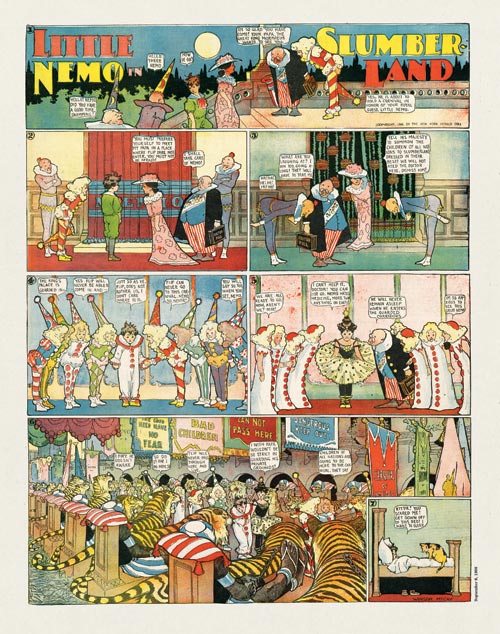
|
PREVIEWSworld (PW): What was your role in getting your favorite project ready for eager readers? How many staff members do you tend to have on your team?
Peter Maresca (PM): For the first book it was an ad hoc staff. I worked alone to start; I gathered the material and restored the images. Then I holed up in the Chinatown section of Paris with three old friends – one a comics publisher, another a book designer, the other a translator and copy editor. After 8 days and two cases of wine we had a book. Since then the Sunday Press efforts have become more organized, but it’s essentially 4-5 people — myself and a designer, usually Philippe Ghielmetti, with a couple of production workers for scanning and such, a copy editor and a proof reader. I also like to have anywhere from 2-5 writers/historians to create essays for each book.
PREVIEWSworld (PW):Many daily strips’ original art was sold, destroyed or lost. What sources were available when you were collecting art for your favorite project?
Peter Maresca (PM): I had spent 35 years collecting the best copies of Little Nemo newspaper pages I could find, so for the first book I relied on my own collection. With subsequent titles, the material was still mostly from my own collection, supplemented by fellow collectors and Ohio State University, which houses Bill Blackbeard’s San Francisco Academy of Art collection. We also like to sprinkle in examples of original art in each book, and for this, many collectors have been kind enough to make their treasures available.
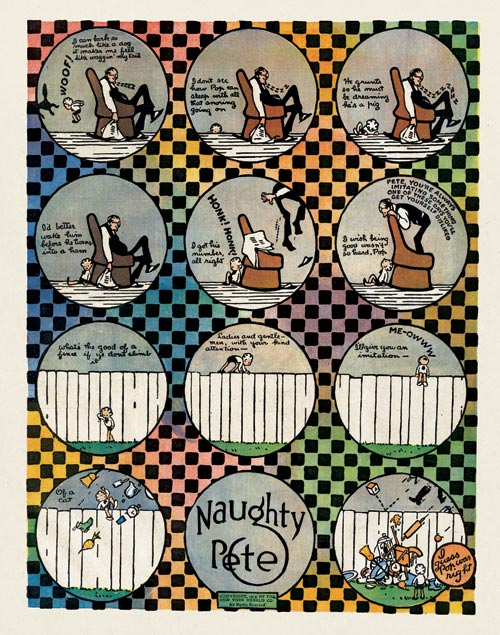
|
PREVIEWSworld (PW):Depending on art sources, the original image quality may have been greatly degraded. How does your production team go about retouching the art?
Peter Maresca (PM): The damage is particularly severe when dealing with the oldest of pages, and we often don’t have a lot of different source material to chose from. I start with scans at 400 or 600 dpi, then digitally repair the tears, holes, stains, etc. that are a result of decades of neglect and abuse. Working at high magnification, I’ll match up individual dots and screens, borrow letters from elsewhere in the text, all to repair the damage and make the pages appear as they did a century ago. Then I’ll finish by adjusting the colors just enough to make them bright again, but keep a bit of the yellow and that softer newspaper feel, always avoiding harsh solid colors and bright whites. When preparing these pages for viewing at full size, small details become important. Imperfections that were there when the pages were printed, like ink smudges or flaws in the paper, remain. On occasion I’ll fix up badly off-register colors when they interfere with characters or text, but that gets a little crazy one dot at a time.
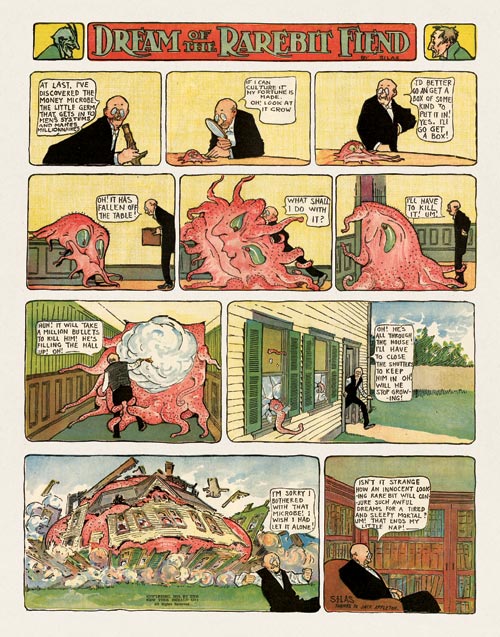
|
PREVIEWSworld (PW):How long did the first volume of this series take you, from the green light on the project until it went to press? What takes the longest? Were there any unexpected roadblocks as you pulled together the oldest material?
Peter Maresca (PM): After spending six months getting turned down by various publishers, it took another six months to figure out what I was doing. I learned how to restore the pages digitally and created an original system for presentation of the comic strip and background. One badly damaged page took more than a day to restore, so this preparation stage takes the longest. Since all my production experience had been in video and computer multimedia rather than print, all the roadblocks were unexpected. But the biggest challenge was probably the press check itself – both for me and for a very patient printer. 80 hours around the clock during a Malaysian monsoon, learning the process as I went along and having no idea if the final product would be accepted by anyone.
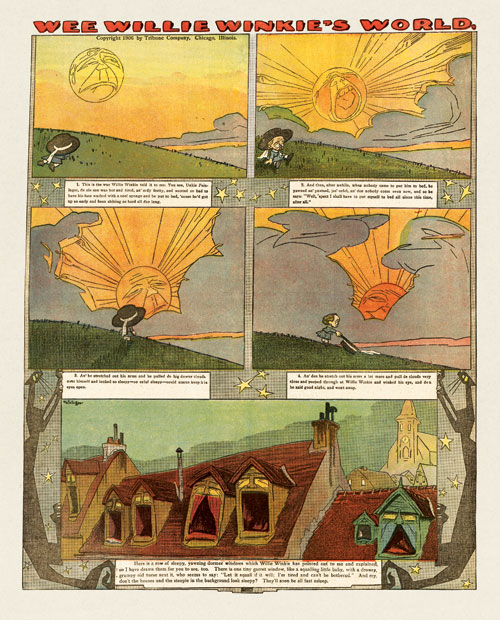
|
PREVIEWSworld (PW):How does your company select titles for this kind of treatment?
Peter Maresca (PM): The first Little Nemo was an obvious choice, since it was the 100th anniversary and most Little Nemo fans had rarely seen the original full-size pages. For subsequent projects, it’s been a matter of going through the collection and seeing what cries out to be restored and published in our format. Sometimes outside influences form other comics historians and strip lovers help in the decision, such as Chris Ware for Gasoline Alley and Patrick McDonnell for the 100th anniversary of Krazy Kat last year.
PREVIEWSworld (PW):What upcoming titles are in the works for your editorial team?
Peter Maresca (PM): I’ve started on a new anthology series presenting the greatest comic strips from 1896 to 1939. The first is “Forgotten Fantasy,” featuring the marvelous fantasy comics from 1900 to 1915, including the complete comics of Lyonel Feininger, plus The Explorigator, Naughty Pete, Nibsy the Newsboy, Dream of the Rarebit Fiend and lots more. Everyone knows Little Nemo, but there were dozens of other fantasy comics at the time, and all are worth seeing in their original format. I’ve got three other volumes planned chronicling the history of comic strips, next up will be an “Origins” volume: pages from the Yellow Kid (and earlier) to Bringing Up Father. After this series I’m not sure. . . maybe smaller books!
PREVIEWSworld (PW):Thank you again for your time and effort here today and all your work preserving comics treasures!
**********
Pre-order these titles from Sunday Press Books now available in the April PREVIEWS catalog!
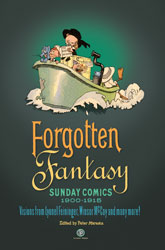
|
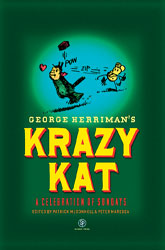
|
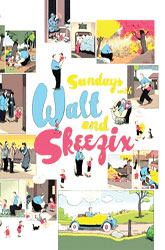
|
|
Code |
Title |
Price |
|
FORGOTTEN FANTASY SUNDAY COMICS 1900-1915 HC |
SRP: $125.00 |
|
|
UPSIDE DOWN WORLD OF GUSTAVE VERBEEK HC |
SRP: $60.00 |
|
|
KRAZY KAT CELEBRATION OF SUNDAYS HC |
SRP: $100.00 |
|
|
SUNDAYS WITH WALT AND SKEEZIX HC |
SRP: $69.95 |




